Michael Swanwick's Blog, page 26
June 19, 2023
Lynn Sun On SciFidea's Dyson Sphere Writing Contest
.
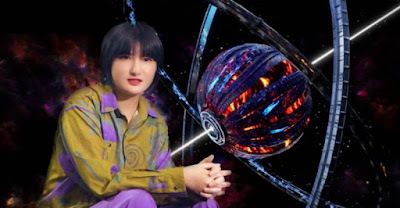
In a recent interview, Lynn Sun, the Chief Editor and co-founder of SciFidea talks about the Dyson Sphere writing contest in detail, including the origins of SciFidea.
Reporter: Can you share with us how SciFidea was developed and launched back in 2021?
Lynn Sun: Sure. SciFidea started as a popular column named “奇想”(QiXiang) in the well-known Chinese SF magazine Science Fiction World. “Qixiang” means fantastic ideas literally, and it refers to the ideas or inspirations for science fiction. We then created a new word – SciFidea – for its English version. It was a new venture. When I joined Tang’s team, there were only Tang and me, a tiny startup with a big science fiction dream. We did all the work, editing, publishing, advertising… you name it! It was not until the second year that we started to have other workmates.
Most of our authors got deeply influenced by Western SF from a young age, and they have the eagerness to communicate with the global SF community directly. It just occurred to us that there is a need for them to talk globally. Our authors have a global perspective, and they can write for all. To provide our writers with a bigger stage, to better connect with the world, and to reach out to a bigger SF community, we decided to dream bigger and go abroad. It was no doubt a huge challenge, as we had many uncertainties about foreign languages and international rules. But we had to get things done without waiting for it to be ready.
There's a lot more and it's all interesting. I recommend you consider reading the entire interview here.
And if you're thinking of entering the contest . . .
Type fast! There's still time to write a novel or novella (30,000 to 100,000 words) if you're fast and you're good. And if you're both, there's a decent chance of being one of the ten winners to receive a $20,000 advance on your novel.
You can find the contest rules in detail here.
*
June 7, 2023
Writing "The Star-Bear"
.
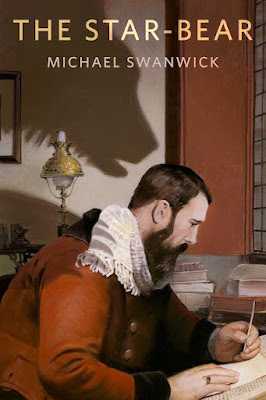
Today, my latest story, "The Star-Bear," goes online at Tor.com. It was edited by Jonathan Strahan and illustrated by Bill Mayer. The illustration is directly above.
To mark the occasion, I've written an essay explaining what went into this particular story, why I wrote it, and some of its hidden allusions. I recommend that you go to Tor.com and read the story first and then come back and read what I had to say. Then again, there are people in this world who eat dessert first. You know which type you are better than I do.
You can find the story here. Or you can go to Tor.com and poke around. It's well worth doing.
Writing "The Star-Bear"
I used to be president of the world.
Okay, technically I was president of the International Unionof Writers1 and it was only an honorary position. But the honormeant a lot to me because it had been arranged by my friends in Russia. I’vebeen to Russia several times over the past two decades and attended Roscon, thenational SF convention, twice and Aelita, the country’s oldest SF conventionthree times (one of them virtual). I had the opportunity to become good friendswith many writers, and fans there. I think the world of them.
There is something about Russia, or perhaps I mean theRussian people, that grabs you by the heart. It’s elusive and hard to explain,but I’ve heard it called “the strangeness of the Russian soul.” Puzzling overthat strangeness led me to write two stories set in Siberia, “LibertarianRussia” and “Pushkin the American.”2 As the titles will tell you,they were genre, not mainstream.
Then the Russian army invaded Ukraine. I had no choice butto resign my position with the IUW.
My Russian friends were outraged. They had bought intoPutin’s potent mix of truths, half-truths, slanders, conspiracy theories, andlies. I happened to know something of the subject, so I posted an essay online explainingwhy the claim that the U.S. had 32 “bioweapon labs” in Ukraine, ready tounleash plagues upon their helpless motherland was a dark fantasy and ridiculousto boot. If anybody there read it, nobody was convinced. Someday the war inUkraine will end. But I doubt I’ll ever be welcomed back by the Russian sciencefiction community that had so warmly embraced me.
It is a sad thing to lose a friend. Sadder still to losemany friends all at once, along with a country I’d come to care about. Not afraction as sad as what every citizen of Ukraine is now going through, ofcourse. But sad enough that I wanted to write a story about that loss.
* * *
The hero of that story was based on an émigré writer namedAlexei Remizov—a modernist, satirist, calligrapher, and student of folklore.When he fled Russia in 1921, he was held to be an important writer. In Paris,he gained the admiration of such luminaries as James Joyce and VladimirNabokov, but the passing decades saw his prominence dwindle. He alienated the émigré community andoutraged Nabokov by applying for and receiving a Soviet passport. But though hewas obviously tempted, he did not return to his native country. Which wasprobably a good thing, for many writers who fled and then returned did not livelong after. When he found himself unpublishable, he created unique storiescombining illustrations and a calligraphic text, which could be enjoyed only bya single reader at a time. He died in 1957, well on his way to being forgotten.
I anagrammatized Remizov’s name to Zerimov because whatlittle I knew of Remizov’s life didn’t fit with the story I wanted to tell. Hiswife Serafima, for one, did not die in Moscow but went into exile with him.
While Remizov was teaching Russian in Paris, he became friendswith the classicist Jane Ellen Harrison and her companion Hope Mirrlees, authorof the fantasy novel Lud-in-the-Mist. His work had a strong influence onMirrlees, so she and Jane made the most fleeting possible appearance in thestory—you’d miss it if I didn’t point it out—as “English bluestockings” Zerimovteaches at the Ecole des Langues Orientales. There is also a reference to JeanCocteau’s Le Cap de Bonne-Espérance, and the claim that a geniuscould build upon its innovations to create something astounding. Which Mirrleesdid in Paris, a Poem, printed and published in chapbook form by noneother than Virginia Woolf. The late scholar Julia Briggs called the poem “modernism’slost masterpiece,” and those few of us who have made a study of it are all convincedit must surely have been an influence on T. S. Eliot, who was a close friend ofMirrlees.
So there is a great deal hidden in this story which no saneperson would expect you to be able to winkle out. Here’s an example: WhenZerimov describes his first encounter with the Star-Bear, making claws of hisfingers and saying, “It reared up and went: Raowrr!” This line I tookfrom my late friend, Andrew Matveev. As a young writer, it was his ambition tobe the Russian Hunter S. Thompson. The editor he submitted his first novel tojabbed the typescript with his forefinger and said, “This novel will never bepublished.” Then he had Matveev sent into internal exile. In Ekaterinburg, hewas given a job as night watchman at the zoo, to keep him out of the way. Inthe small hours, the big cats there made it clear what they wanted to do withhim. After Perestoika, Andrew (never Andrei) Matveev was free to write andpublish. But, he said, “A part of what I could have been was taken away fromme.”
I could go on and on. But I am not trying to impress youwith my cleverness. I simply hold up these sources so you can appreciate howmuch more than you can see goes into even the simplest and most straightforwardof stories. That bit of fluff you enjoy so much? That too. All of a writer’slife goes into every story, and a great deal of effort goes into hiding thatfact. Because, as William Butler Yeats wrote in one of his poems, “A line willtake us hours maybe;/Yet if it does not seem a moment’s thought,/ Our stitchingand unstitching has been naught.”
I hope you read my story, which the good folk at Tor havemade available online for free. But if it doesn’t work for you on the surfacelevel, as a simple tale of a man and a bear and possibly a woman, all thisbackground will be for naught. Still, if you do read it, I hope it gives youpleasure.
The story’s title was borrowed from Remizov’s bear-story “TheStar-Bear,” one of four by him that appeared in The Book of the Bear,translated and edited by Harrison and Mirrlees.
1 The IUW was founded in Paris in 1954, hit hardtimes with Perestroika, and now its membership is almost entirely Russian,though there have been efforts in recent years to make it truly internationalagain. If you know the history of the last seventy years, this should tell youa lot.
2In one, a young post-Collapse Russian, enamoredof American cowboy movies, travels across Siberia and discovers why “Russian”and “Libertarian” are incompatible terms. The other is about a 19thcentury American stranded in Ekaterinburg, who becomes his new nation’s most reveredwriter. Which I admit was pretty cheeky of me.
@font-face {font-family:"Cambria Math"; panose-1:2 4 5 3 5 4 6 3 2 4; mso-font-charset:0; mso-generic-font-family:roman; mso-font-pitch:variable; mso-font-signature:-536870145 1107305727 0 0 415 0;}p.MsoNormal, li.MsoNormal, div.MsoNormal {mso-style-unhide:no; mso-style-qformat:yes; mso-style-parent:""; margin:0in; mso-pagination:widow-orphan; font-size:12.0pt; font-family:"Times New Roman",serif; mso-fareast-font-family:"Times New Roman";}.MsoChpDefault {mso-style-type:export-only; mso-default-props:yes; font-size:10.0pt; mso-ansi-font-size:10.0pt; mso-bidi-font-size:10.0pt; mso-font-kerning:0pt; mso-ligatures:none;}div.WordSection1 {page:WordSection1;}
@font-face {font-family:"Cambria Math"; panose-1:2 4 5 3 5 4 6 3 2 4; mso-font-charset:0; mso-generic-font-family:roman; mso-font-pitch:variable; mso-font-signature:-536870145 1107305727 0 0 415 0;}p.MsoNormal, li.MsoNormal, div.MsoNormal {mso-style-unhide:no; mso-style-qformat:yes; mso-style-parent:""; margin:0in; mso-pagination:widow-orphan; font-size:12.0pt; font-family:"Times New Roman",serif; mso-fareast-font-family:"Times New Roman";}.MsoChpDefault {mso-style-type:export-only; mso-default-props:yes; font-size:10.0pt; mso-ansi-font-size:10.0pt; mso-bidi-font-size:10.0pt; mso-font-kerning:0pt; mso-ligatures:none;}div.WordSection1 {page:WordSection1;}Above: The Illustration for "The Star-Bear" was, as I said, made by Bill Mayer. I think he did a terrific job of it.
*
June 1, 2023
Coming Soon: "The Star-Bear" on Tor.com!
.

One of the pleasures of publishing a story on Tor.com is that they provide a full-color illustration by a skilled artist for each one. My newest publication there is, or rather will be, "The Star Bear," which premiers on June 7th. The cover above is by Bill Mayer and I am, of course, extremely happy with it.
Aside from the obvious, I like the subtle details that show how much thought Mayer has put into the picture. The lamp, mentioned once in passing, is exactly as it should be for that time and place. And did you know that Russians wear their wedding rings on the right hand? Neither did I until I looked it up just now.
I'll write more about my story (edited by Jonathan Strahan) when it comes out. For now, I'll just provide you with a link to Bill Mayer's website, so you can admire more of his art. It's right here.
And I might as well say . . .
What a marvelous thing Tor.com is! It combines the best aspects of a fiction magazine (the fiction, chiefly) and of a fanzine (the quirky non-fiction). With professional artwork. There's never been anything quite like it.
You can show your appreciation by buying some Tor Books. That's just a suggestion, mind you. But it's a pleasant one. Because, let's be honest here, you don't have half as many books as you'd like to own.
Oh, and tomorrow . . .
Marianne's newest Dragonstairs Press chapbook goes on sale. Noon, Philadelphia time. Set your alarm clocks. They usually sell out fast.
*
Brief Essays on Genre from Dragonstairs Press
.
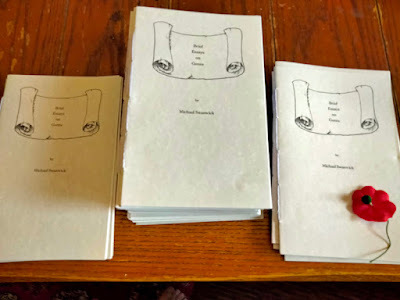
Dragonstairs Press will be rolling out a new chapbook on Saturday, June 3. Its title is Brief Essays on Genre. Its title is self-explanatory. There are twenty-five essays, all definitive, infallible, wise, and true. Some are witty, a couple are grim, and they are all very, very short.
This series originally ran on Flogging Babel, my blog, once a week for roughly half a year in 2022. Now they are collected and made available for sale for the very first time.
Here's the info straight from Marianne Porter, the editor and sole proprietor of Dragonstairs:
Brief Essays is hand-stitched, numbered, and signed by the author. It is issued in an edition of 75, of which 72 will be available for sale. Please order starting on Saturday June 3, 2023 at noon EDT, at the Dragonstairs website, www.dragonstairs.com.
Including shipping: $11 domestic, $13 international.
If you're interested, I suggest you set your alarm clock for a minute before noon. Dragonstairs Press chapbooks typically sell out very quickly.
And if you're not familiar with the essays . . .
Not everybody follows Flogging Babel (www.floggingbabel.blogspot.com). Which is a mistake because from time to time I post extremely interesting things on it. So you may not be familiar with the essays in question. Here's one example, to whet your appetite:
BriefEssays on Genre: Part 3
On the Origin of Fantasy
The firststory was told by a spear-fisher deep in our ancestral past. After missing acast, the fisher exclaimed, “Did you see that fish?”
“No,”somebody standing nearby said. “How big was it?”
“It was—”The spear-fisher held up hands to indicate the length, then suddenly yankedthem farther apart. “—this big!”
For aheartbeat, it had seemed the Ur-story would be mimetic—mainstream. But with a leapof imagination it became fantasy and realism has been a subset of fantasy eversince.
--MichaelSwanwick
*
@font-face {font-family:"MS Mincho"; panose-1:2 2 6 9 4 2 5 8 3 4; mso-font-alt:"MS 明朝"; mso-font-charset:128; mso-generic-font-family:modern; mso-font-pitch:fixed; mso-font-signature:-536870145 1791491579 134217746 0 131231 0;}@font-face {font-family:"Cambria Math"; panose-1:2 4 5 3 5 4 6 3 2 4; mso-font-charset:0; mso-generic-font-family:roman; mso-font-pitch:variable; mso-font-signature:-536870145 1107305727 0 0 415 0;}@font-face {font-family:"\@MS Mincho"; panose-1:2 2 6 9 4 2 5 8 3 4; mso-font-charset:128; mso-generic-font-family:modern; mso-font-pitch:fixed; mso-font-signature:-536870145 1791491579 134217746 0 131231 0;}p.MsoNormal, li.MsoNormal, div.MsoNormal {mso-style-unhide:no; mso-style-qformat:yes; mso-style-parent:""; margin:0in; mso-pagination:widow-orphan; font-size:12.0pt; font-family:"Times New Roman",serif; mso-fareast-font-family:"MS Mincho"; mso-fareast-theme-font:minor-fareast;}.MsoChpDefault {mso-style-type:export-only; mso-default-props:yes; font-size:10.0pt; mso-ansi-font-size:10.0pt; mso-bidi-font-size:10.0pt; mso-fareast-font-family:"MS Mincho"; mso-fareast-theme-font:minor-fareast; mso-font-kerning:0pt; mso-ligatures:none; mso-fareast-language:JA;}div.WordSection1 {page:WordSection1;}
May 31, 2023
"She Saved Us From World War Three"
.
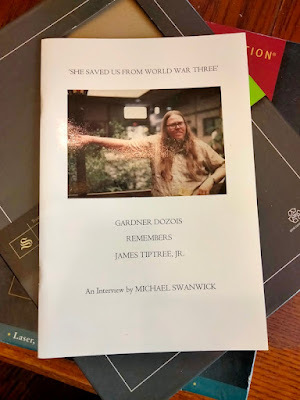
Bookman and occasional small press publisher Henry Wessells has asked me to remind the universe of the existence of his remarkable chapbook, "She Saved Us From World War Three."
Very well, I shall.
Let's start with the cover photograph of Gardner Dozois, taken by author John DeChancie back when mastodons yet roamed the land and the Great Man was only beginning to lose his youthful gauntness. John gave it to me decades after the fact when he was cleaning house. Henry chanced to see it hanging up when he came to visit once and after all those long years, the pic discovered its destiny.
Inside is my interview with Gardner about his relationship with Alice Sheldon, the woman who wrote under the name of James Tiptree, Jr. It's a fascinating document because he was one of the very few science fiction people who actually met her, and they had a close enough relationship that she felt free to call him late at night when she was sitting, gun in hand, thinking of blowing her brains out, so he could spend hours talking her out of it. But the interview was not originally meant to be the meat of the chapbook.
It was to have been an introduction to a small collection of the Dozois-Tiptree-Sheldon correspondence, but for unknown and probably artistic reasons (I really should ask Henry someday) the introduction became the main event.
Following the interview is a brief essay by Wessells explaining the circumstances of his becoming involved in the preservation of the correspondence. Then two letters from Sheldon to Dozois. The first is an advance warning that she is about to be "outed" as a woman. The second tells him how relieved she is that he's still her friend. (Gardner knew literally close to everybody working in the field of science fiction and corresponded with dozens, maybe hundreds of them. There was nobody he respected more than the person who wrote Tiptree's stories. So this cannot have come entirely as a surprise to her. But she was a complicated individual.)
Finally, there are two fold out facsimiles/photographs of the letters themselves, typed on Tiptree's famous blue paper with darker blue ink.
Printed on slick paper, with a heavy slick stock cover. 15 pages of text, including the title page, plus the two fold-outs.
Having read this far, you know whether you need a copy or not. There really is nothing quite like it anywhere and it's priced at an eminently affordable $20. The chapbook was published by Temporary Culture in an edition of 225 and you can order a copy here.
And did she really . . .?
Save us from World War Three? I honestly don't know. Alice Sheldon certainly believed she did. And Gardner Dozois believed her. Read the interview and make up your own mind.
It's kind of scary that we live in a world where this is eminently plausible, though.
*
May 30, 2023
Short Fiction Review: "Time and Art" by Barbara Krasnoff
ppp.
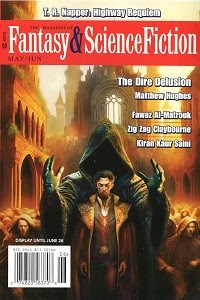
This is one of those stories which I reflexively hate. It's an Art-with-a-capital-A story and I despise those. Yet here it works.
"Time and Art" by Barbara Krasnoff is very spare and very short. There is not a word wasted in it. This is a virtue. But it makes it hard to describe the story without giving too much away.
Let me try:
A woman, the protagonist, goes to a wise woman and begs her to give her the time she needs to create her art. The woman is a seamstress and weaver (kudos to Krasnoff for not making her a poet or a painter!), the enemies of her art are the quotidian chores and domestic obligations we are all too familiar with, and the wise woman is truly wise for she first offers a practical solution before resorting to magic.
This being, as I said, an extremely short story, I can offer no more specifics. But I can say that the structure is flawless, that in the resolution the woman's daughter rings in the dark side of creation without spoiling the triumphant conclusion, and that the wise woman is rewarded in a way that happily reiterates her wisdom.
Reader, read this. New or gonnabe writer, study but do not try to emulate it just yet. It surely took Krasnoff long years to be able to boil down this story to its essence. Be patient. You'll get there too.
This is a perfect little gem of a story.
*
May 19, 2023
Albert Hodkinson of the No. 10 Squadron
.

I've just come back from the wrap party following a live Zoom presentation that our next-door neighbor, Albert Hodkinson, gave to the Number 10 Squadron of the Royal Air Force.
Albert is 101 years old and going strong. He is a fine storyteller and modest to boot. He was in the RAF during WWII. He started the war as a mechanic because, as he put it, "Only gentlemen were allowed to fly their airplanes," and he was from the East End of London. By the end of the war, he was a navigator on one of the Shiny 10's Lancasters. "Because they'd run out of gentlemen."
One time, Albert explained the easy way home from a night raid over Berlin. They'd fly west until they came to the white cliffs of Dover and turn right. Then, when they came to the Thames they'd left and follow it upriver until they came to the old Roman road. There, they'd turn right again and follow the road up into Scotland where their base was.
The hard way to navigate was by sextant. I asked him about that once and he told me that it was every bit as difficult using one on a jolting airplane with scattered clouds blocking the stars as you might imagine.
My son Sean was the tech crew for the event and, by all accounts, a good thing too. Afterward, family and friends and neighbors came by to make a party of it. Which is where this account began.
Marianne and I admire Albert greatly, so I thought I would share this so you can too.
Above: I apologize for the quality of the snapshot. Some days I'm a better photographer than on others. This, alas, is not one of those days.
*
May 18, 2023
Maitresse des Maitresses! avec "Une Conversation Entre Ellen Kushner & Michael Swanwick"
.

Look what came in the mail recently! The first French Edition of E. R. Eddison's magisterial fantasy, Mistress of Mistresses published and beautifully packaged by Éditions Callidor. Translated by Patrick Marcel, with illustrations by Emily C. Martin.
I received a copy because back in January, Éditions Callidor asked Ellen Kushner, who had done an introduction to Eddison's The Worm Ouroboros for them that had made everybody extremely happy, if she could do something similar for Maitresse des Maitresses. "Sure," she said. "When do you want it?"
By the end of the month, as it turned out.
You may not be aware of this, but a well-researched and carefully thought-through introduction takes a lot of time and work. So, knowing I was a fellow Deep Lore Nerd when it came to the Zimiamvian Trilogy, Ellen suggested we collaborate. And, boy howdy, did we! I came up with the conversational format and we swapped emails back and forth, several times a day, right up to the deadline. It was great fun. And I think we came up with something special.
Here's a small taste, from early in the colloquy:
MICHAEL
They [the books] were never quite forgotten.
Given that before the Tolkien explosion highfantasy was scarcer than hippogriffs, it can be assumed that anybody who tookfantasy seriously then (their number was admittedly small) had to findand read him.
An informal survey of the fantasy writers of theforties through mid-sixties reveals that L. Sprague de Camp, Fletcher Pratt,Fritz Leiber, Ursula K. Le Guin, Michael Moorcock, Poul Anderson, James Blish, andof course J. R. R. Tolkien and C. S. Lewis were all documented readersand admirers of Eddison. There were doubtless many more. James Stephens wrotean introduction to The Worm Ouroboros, comparing Eddison to Shelley,Blake, and Milton. De Camp, who dedicated a chapter of Literary Swordsmen and Sorcerers toEddison, called Mistress of Mistresses "asplendid story, quite different from TheWorm Ouroboros but almost on a level with it." Eddison's contemporary James Branch Cabell, wrote:"I find here—in his finest, his purest, and his most romantic vein—thefinest living writer of pure romance." Other than Cabell, however, every single one of them thought The Worm Ouroboros was superior to the ZimiamvianTrilogy.
They were wrong.
ELLEN
They were so very wrong. Maybe it’s becausethey just weren’t used to what Eddison was offering in Zimiamvia. The WormOuroboros has the feel of a Norse saga, and Norse sagas were familiar toAnglo lovers of fantasy.
Mistressof Mistresses presents us with aRenaissance court, with scheming courtiers with elaborate politics, even more elaboratecostumes, and vastly elaborate philosophical discussions on the nature ofreality that could make a scholar’s eyes cross—with an added dash of Provencalromance. And unlike popular heroic fantasy then and now, good and evil are notso clearly delineated. Good guys can behave badly, and bad guys can begracious. Indeed, Zimiamvia’s villains can be so utterly delicious that thebook’s hero, Lord Lessingham, throws in his lot with one of them.
If you're curious what else we had to say, you'll have to buy a copy of Maitresse des Maitresses and read it in French. Presumably, someday it will appear in English--I'll leave the details of that to Ellen. But if and when it does, trust me, I'll share the information here.
In the meantime, since Éditions Callidor very graciously also sent me a copy of Le Serpent Ouroboros with Ellen's introduction, here's a photo of the two books together. (The red sticker is a gushing blurb by J. R. R. Tolkien.)
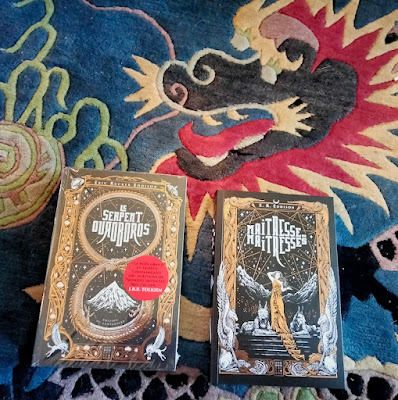
*
@font-face {font-family:"Cambria Math"; panose-1:2 4 5 3 5 4 6 3 2 4; mso-font-charset:0; mso-generic-font-family:roman; mso-font-pitch:variable; mso-font-signature:-536870145 1107305727 0 0 415 0;}p.MsoNormal, li.MsoNormal, div.MsoNormal {mso-style-unhide:no; mso-style-qformat:yes; mso-style-parent:""; margin:0in; mso-pagination:widow-orphan; font-size:12.0pt; font-family:"Times New Roman",serif; mso-fareast-font-family:"Times New Roman";}.MsoChpDefault {mso-style-type:export-only; mso-default-props:yes; font-size:10.0pt; mso-ansi-font-size:10.0pt; mso-bidi-font-size:10.0pt; mso-font-kerning:0pt; mso-ligatures:none;}div.WordSection1 {page:WordSection1;}
May 16, 2023
Gregory Frost's RHYMER Is Coming Our Way!
.
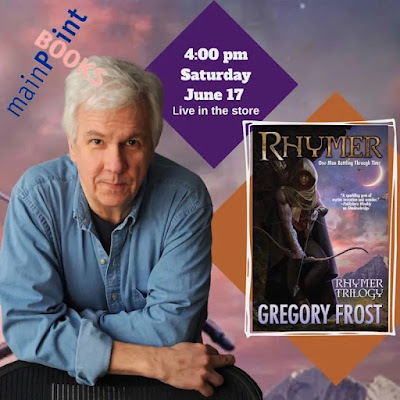
My most-waited book of the year is Gregory Frost's new novel Rhymer. It's volume one of what the publicity calls a "fantasy trilogy," which... yes, but... see...
Ahem. As you may guess, Greg and I have talked about this book and there's way more to it than meets the eye. I'm not going to give away any spoilers but I will say that there are surprises in store and that I think you will like them.
Here's what Simon & Schuster's publicist has to say about it:
He’s known by many names over time—Tam Lin, Robin Hood, and numerous other incarnations reaching into the present—but at his heart he is still True Thomas, one man doing all he can to save us all from a powerful foe.
When his brother is snatched right before his eyes, Thomas hunts for justice and discovers that not only do these “elves” steal people, but they also are skinwalkers who occupy humans in positions of power. Their goal: to obliterate humanity and take over our world. When Thomas is dragged into their alien realm, he’s imprisoned and barely escapes alive, but in the process he gains near-immortality and the ability to transform himself. Will it be enough to protect his loved ones and defeat this powerful foe?
Rhymer brings to life Thomas the Rhymer, legendary twelfth-century figure of traditional Scottish balladry, as a champion who must battle the diabolical Yvag—an alien race thought to be elves and faeries—hell-bent on conquering our world. This saga pits Thomas against the near-immortal elves, first with only his wits, then with powers of his own that enable him to take on these evil creatures throughout the centuries.
Sounds great, doesn't it? It's going to be even better than it sounds.
Coming very, very soon. Available for pre-order now.
And speaking of the poster above . . .
As you can see, Greg will be doing a book launch at Main Point Books on Saturday, June 17. A mere hop, skip, and a month from now. They recommend reserving a (free) place for yourself, though walk-ins will be allowed for as long as seating is involved.
You can read all the details here.
Oh, and Greg was too modest to mention the event to me--a friend turned me on to it. Which means he was also too modest to ask me for a blurb. I, however, have no modesty whatsoever. So I'll say it out loud: "Gregory Frost is one of the best writers of our generation and a living literary treasure. Discover him now!"
And while you're waiting, why not read Shadowbridge and its sequel Lord Tophet? I recommend them very highly indeed.
*
May 10, 2023
The First--and Enthusiastic--Review for The Best of Michael Swanwick Vol. 2!
.
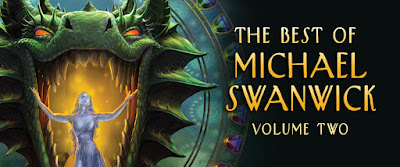
My new Subterranean Press collection has just received its first review--and it's a good one! I won't pretend that this doesn't make me happy. Anyway, here's what Publishers Weekly has to say:
The Best of Michael Swanwick, Vol. Two
Michael Swanwick. Subterranean, $50 (536p) ISBN 978-1-64524-112-6Hugo and Nebula Award winner Swanwick showcases his talent for world and character building in this superior collection of 37 shorts written between 1999 and 2023. The opening of the charmingly folkloric “There Was an Old Woman...” (“Had he been a superstitious man, Darger would not have wound up being swallowed by a dragon”) exemplifies Swanwick’s ability to grab readers’ attention. “Pushkin the American” delivers a moving alternate literary history reimagining the life of the 19th-century Russian author had he been born in Philadelphia, following him on a twisty path to becoming a man of letters in czarist Russia. In a tone suitable to a bedtime story, “The Scarecrow’s Boy” recounts how a robot reacts to the plight of a child survivor of a suspicious car crash, suggesting that empathy is not limited to humans. The range of theme and style is vast—other entries reimagine Norse myths (“The Last Days of Old Night”) and Lovecraft’s Cthulhu mythos (“Dreadnought”)—but Swanwick remains remarkably sure-footed as he dances between genres. Combining innovative plots with evocative prose, this further cements Swanwick’s place in the speculative canon. Agent: Danielle Bukowski, Sterling Lord Literistic. (July)
And come to think . . .
This is the second best-of-me volume that Subterranean has published (the first came out in 2008). Which means that if my astonishing good health continues, I have every chance of getting a third volume sometime in 2038. Collect the complete set!
*
Michael Swanwick's Blog
- Michael Swanwick's profile
- 546 followers



